Year End Tax Review 2020/21
Brace for more change
The UK is now treated as a third country in relation to the EU, which means the VAT rules on imports and exports have changed for all goods (of any value) crossing the EU border and into Northern Ireland.
Sales of digital services to non-business customers in the EU must now be reported under the non-EU VAT MOSS scheme, which requires UK businesses to register for VAT in an EU country. There may also be industry-specific conditions for selling goods and services from the UK into the EU, so don’t assume that everything for your business will operate as before.
Coronavirus restrictions are also in place across the UK, affecting your cashflow, suppliers and customers. If you need to claim under a Government support scheme for furloughed staff wages (CJRS) or for self-employed profits (SEISS), pay attention to the monthly and quarterly deadlines.
VAT within the construction industry is set to change on 1 March 2021, so if you operate in that sector you need to prepare for this now, as we outline below.
The Autumn 2020 Budget was cancelled, so we expect some very significant economic and tax changes in the Spring Budget Statement on 3 March 2021.
For example, the Government recently commissioned a review of Capital Gains Tax, which recommended streamlining reliefs and increasing the tax rates. These changes could take effect from Budget day, or from the start of the next tax year on 6 April 2021, if implemented.
This guide has been written on the basis that the basic rate Income Tax threshold and Personal Allowance will be increased by the rate of inflation for 2021/22 but we can’t be certain what other tax rates and thresholds will apply.
We recommend you undertake an annual review of your financial affairs to check that you are not paying more tax than you need to and whether the structures you set up in the past are still appropriate. Between now and the end of the tax year (5 April 2021) is a good time to assess whether you have claimed all the relevant allowances and are as well defended against high tax charges as you can be.
Of course, the personal circumstances of each individual must be taken into account in deciding whether any particular plan is suitable or advantageous – but these suggestions may give you some ideas. We are happy to discuss them with you in more detail.
TAX ON PERSONAL INCOME
Interesting savings
All interest you receive is taxable, unless it is from an ISA, but banks and building societies no longer deduct tax from interest paid to individuals. For most taxpayers the rate of tax payable on that interest is 0%, so no tax is in fact due.
This zero tax rate applies where your savings income falls within your Savings Rate Band (SRB), which is worth up to £5,000, or within your Personal Savings Allowance (PSA), which is worth £1,000 for basic rate taxpayers or £500 for higher rate taxpayers. Any savings income which falls outside the SRB or PSA is taxed at your marginal Income Tax rate (currently 20%, 40% or 45%).
The available SRB depends on how much other taxable non-savings income you receive, such as salary, pensions, trading profits or rent. If you can control the type of income you receive, you can reduce the total tax you pay for the year.
| Example | |||
| Harry has £150,000 of capital deposited in a bank at 1%, so he receives £1,500 of interest per year. After deducting his Personal Allowance from his salary of £17,500 he has £5,000 of taxable income, which is deemed to eat up his SRB. He is a basic rate taxpayer, so has a PSA of £1,000. | |||
| 2020/2021 | Non-savings | Savings | Tax payable |
| Salary/Interest | £17,500 | £1,500 | |
| Personal Allowance | (12,500) | ||
| Taxed @ 20% | 5,000 | 1,000 | |
| PSA | (1,000) | ||
| Taxed @ 20% | 500 | 100 | |
| Total tax payable | 1,100 | ||
| Harry lends £150,000 to his company, which pays him interest at a commercial rate of 3.5% (i.e. £5,250) under a written agreement. The company uses the money for developing a business property. Harry also reduces his salary to £13,750, so that his total income is still £19,000. Reducing his salary frees up some starting rate band to set against his interest income – see below. | |||
| 2020/2021 | Non-savings | Savings | Tax payable |
| Salary | £13,750 | ||
| Interest | 5,250 | ||
| Personal Allowance | (12,500) | ||
| Taxable @ 20% | 1,250 | 250 | |
| 5,250 | |||
| SRB (5,000-1,250) | (3,750) | ||
| PSA | (1,000) | ||
| Taxable @ 20% | 500 | 100 | |
| 350 | |||
| Harry’s tax bill has been reduced from £1,100 to £350 on the same level of income. The company must deduct tax at 20% from the interest it pays him but this can be reclaimed by Harry. | |||
| Action Point! |
|---|
| Review your mix of income to maximise your Savings Allowance for 2020/21 |
Max out your state pension
Individuals who reach State Pension Age (SPA) on or after 6 April 2016 need to have accrued 35 complete years of National Insurance Contributions (NIC) to receive the full state pension. To receive any UK state retirement pension, you need at least ten complete NIC years.
You can check how much state pension you are due to receive through your personal tax account on gov.uk. We can help you with this.
It is possible to plug gaps in your NIC record by paying voluntary Class 2 or Class 3 NIC. This payment generally needs to be made within six years of the gap year, but there are a number of exceptions which extend that period.
You may also qualify for NI credits for some years if you were claiming state benefits, Child Benefit or were a foster carer. The NI credits were not always applied automatically, so it’s worth checking your own NIC record.
| Action Point! |
|---|
| Consider topping up your NIC record by claiming NIC credits or paying more contributions. |
ISA nice idea to save for retirement
You can save for retirement in a number of ways. The traditional route is via a pension scheme, but you could also use an ISA.
Savers aged under 40 can open a Lifetime ISA and contribute up to £4,000 per year, which attracts a 25% bonus from the Government. This bonus is withdrawn if the savings are accessed other than to be used as a deposit for the saver’s first home, on diagnosis of a terminal illness, or from age 60 onwards.
The Lifetime ISA savings are counted as part of the annual ISA allowance of £20,000 per tax year. This allowance can’t be carried over to a future tax year, so you need to use it or lose it.
ISA savings are not taxed when they are withdrawn, but they don’t attract tax relief on the way into the account.
Pension scheme savings are taxed when they are withdrawn, with an exception for the first 25% cash lump sum taken. However, contributions into a registered pension fund will attract tax relief at your highest tax rate, subject to the cap imposed by your annual allowance.
This annual allowance is nominally set at £40,000, which covers pension contributions made by you and by your employer on your behalf. Any annual allowance not used can be carried forward for up to three years.
If your income is over £200,000 and adding the pension contributions made by your employer takes that total to over £240,000, your annual allowance is reduced by £1 for every £2 over that threshold, down to a minimum of £4,000.
Your annual allowance is also reduced to exactly £4,000 if you have ever accessed your taxable pension savings built up in a money purchase (defined contribution) pension scheme. This is to prevent you from drawing funds from your pension scheme and then putting significant money into the same or another pension scheme, with additional tax relief.
Any unused amount of this £4,000 ‘money purchase annual allowance’ can’t be carried forward to future tax years.
| Action Point! |
|---|
| Review your pension saving plans before 6 April 2021. |
Give and save
Giving to charity under Gift Aid can result in a win/win for both the donor and the charity.
Making a Gift Aid donation will reduce your tax bill for the year in which the donation is made if your total income is above the 40% threshold (£50,000 for 2020/21). Taxpayers resident in Scotland can save tax with Gift Aid donations if their total income, including earnings, is above the 21% threshold (£25,158 for 2020/21). Alternatively, you can shift the tax benefit of that Gift Aid back one year by telling HMRC on your tax return. This can be useful if your marginal tax rate was higher last year than in the current tax year.
To carry back the Gift Aid donation it must be made before you file your tax return for the earlier tax year. Say you make a Gift Aid donation of £2,000 on 21 December 2021. If you submit your 2020/21 tax return after that date (it’s due by 31 January 2022) you can include a claim in that return to carry back the £2,000 donation you made on 21 December 2021, which will reduce your 2020/21 tax liability.
Gift Aid can reduce your income used to calculate the clawback of Child Benefit (income over £50,000) and the reduction in Personal Allowance (income over £100,000). It can also increase your higher rate or additional rate threshold, which determine whether you receive a Personal Savings Allowance of £1,000, £500 or nil.
To make a valid Gift Aid donation, you must declare that you will pay sufficient tax to cover 25% of the value of your gift in the year the gift is made (or in the previous year if a carry back claim is being made). If you give £800 under Gift Aid, you must pay Income Tax and/or Capital Gains Tax of at least £200.
| Action Point! |
|---|
| Do you want to make charitable donations before you complete your next tax return? |
Tax-free rent
When you let rooms in your own home as residential accommodation, you can receive the rent tax-free if it falls within the limits for rent-a-room relief. This relief is currently capped at rents of £7,500 per year. Where more than one person receives the rent from the property, each person has a tax-free exemption for rent of £3,750.
The conditions for rent-a-room relief stipulate that you must occupy the property as your main home at some point in the tax year – this relief can’t cover income from a holiday home or buy-to-let property. Also, the accommodation must be used for residential purposes, not as an office or storeroom.
If you let out land or buildings which don’t qualify for rent-a-room relief, the income could be covered by the £1,000 property income allowance. You can’t use this allowance against rent paid by your own company, a company you work for, or one your spouse is associated with.
If either type of rental income exceeds the relevant allowance, it must be declared on your tax return, along with any related expenses. If the allowance exceeds the actual expenses, you can deduct that allowance in place of those expenses.
| Action Point! |
|---|
| Can you claim rent-a-room relief or the property allowance? |
A family view
In the UK, everyone is taxed as an individual, but social security benefits, including Tax Credits and Universal Credit, are awarded on the basis of the family’s total income. Child Benefit is withdrawn based on the income of the higher earner in a couple, irrespective of who receives it.
Families with an unequal distribution of income will often pay more tax than couples who earn just enough each to cover their Personal Allowance (£12,500 for 2020/21) and the basic rate band. The thresholds for restricting Child Benefit (£50,000), Personal Allowance (£100,000) and Pension Annual Allowance (£240,000) all operate for the individual, so disadvantage families where the income is concentrated in one person’s hands.
Consider the Browns – they have two children and claim Child Benefit. In 2020/21 George Brown earns £90,000 and pays higher rate tax, but Sally Brown has no income. Because George’s income is over £60,000, the family’s total Child Benefit is clawed back from him as a tax charge.
In contrast, John and Joy Green each earn £45,000, so they keep their Child Benefit and pay less Income Tax, as their highest marginal tax rate is 20%. Both Greens make use of their full Personal Allowance and most of their basic rate band.
Roger and Rose White are in a worse tax position. Roger’s total income is £210,000 and his employer contributes £40,000 into his pension scheme. Roger and Rose have no effective Personal Allowances, as Rose has no income to set her allowance against and Roger’s Personal Allowance is entirely withdrawn, because his income exceeds £125,000.
Roger is treated as having income of £250,000 (£210,000 + 40,000) for pension relief purposes. His pension annual allowance is therefore reduced to £35,000, so he suffers an annual allowance charge at 45% on £5,000 of the pension contribution made by his employer.
These examples show that families can save tax if they transfer some income from the higher earner to the lower earner, in order to take advantage of the Personal Allowance or lower tax bands, and to avoid the clawback of allowances. This is not always easy to do, but the following methods are permissible:
- make an outright gift of investments which produce taxable income
- put savings and investments into joint names and share the income
- employ the spouse or partner in the other person’s business
- take the spouse or partner into partnership in that business
HMRC can challenge some of these methods if they think the transfer is not genuine – always take tax advice to be sure that your plan will work.
| Action Point! |
|---|
| Can you transfer income to reduce your family’s tax and save your allowances? |
Scottish Taxes
If your main home is in Scotland, you pay Income Tax at up to six different rates: 0%, 19%, 20%, 21%, 41%, and 46%, on any of your income which doesn’t come from dividends or savings. Your interest, dividends and gains are taxed at the rates and in the tax bands applicable in the rest of the UK.
The Scottish tax bands are not aligned with the National Insurance Contribution (NIC) thresholds, which leads to some very high marginal rates for Scottish residents, as shown in the table.
The NIC rates are different for selfemployed individuals, and don’t apply for those over state pension age. The high marginal rate between £100,001 and £125,000 arises because the Personal Allowance is withdrawn by £1 for every £2 of additional income in that band.
If you live in Scotland and plan to take taxable income from your pensions or pay yourself a bonus, be very careful not to push your income into a band where it is taxed at 53% or 63.5%.
| Employee in Scotland in 2020/21 | |||
|---|---|---|---|
| Income in band £ |
Scottish tax % |
NIC % |
Total rate on band % |
| 0 – 9,500 | 0 | 0 | 0 |
| 9,501 – 12,500 | 0 | 12 | 12 |
| 12,501 – 14,585 | 19 | 12 | 31 |
| 14,586 – 25,158 | 20 | 12 | 32 |
| 25,159 – 43,430 | 21 | 12 | 33 |
| 43,431 – 50,000 | 41 | 12 | 53 |
| 50,001 – 100,000 | 41 | 2 | 43 |
| 100,001 – 125,000 | 61.5 | 2 | 63.5 |
| 125,001 – 150,000 | 41 | 2 | 43 |
| Over 150,000 | 46 | 2 | 48 |
| Action Point! |
|---|
| Check what tax rate will apply on any extra income you plan to take. |
Tipping points
When your total income reaches certain thresholds, it tips any extra income into a tax band where a higher rate of tax is charged. This can also mean you lose part or all of your Savings Allowance, Child Benefit, Personal Allowance, or Pensions Annual Allowance.
Taxpayers who live in Scotland have slightly different tax thresholds than those that apply in the rest of the UK (see above), but the principle is the same. You may be able to save tax by moving income from 2020/21 to 2021/22, or by making certain payments in 2020/21 rather than in 2021/22.
Say you are a 20% taxpayer in 2020/21 but expect that a lump sum termination payment due in March 2021 will tip you into the 40% band (over £50,000). If you ask your employer to delay paying the termination payment until after 5 April 2021, you’ll pay the tax on that income later. You will also retain all of your 2020/21 £1,000 Savings Allowance and may still stay out of the 40% band for 2021/22. We don’t yet know the 40% threshold for 2021/22 but it is likely to be at least £50,270. The main thresholds for 2020/21 are:
- Personal Allowance: £12,500 – basic rate tax (20%) starts
- higher rate threshold: £50,000 – 20% rate increases to 40% and Savings Allowance reduces from £1,000 to £500
- married couples: transfer of 10% of Personal Allowance is possible where the higher earner has income of no more than £50,000
- Child Benefit clawback: income between £50,000 and £60,000
- withdrawal of Personal Allowance: income between £100,000 and £125,000
- additional rate threshold: £150,000 – 40% rate increases to 45%, Savings Allowance removed, and
- pension annual allowance reduced where income (including employer pension inputs) above £240,000
Income that can easily be moved from year to year includes:
- bonus from your own company
- dividends from your company
- encashments of life assurance bonds
- withdrawal of taxable income from pension schemes in ‘drawdown’.
| Action Point! |
|---|
| Consider moving income or deductions around 5 April 2021. |
Your clear intention
When you die, your executors or relatives need to sort out your affairs. This stressful task can be made easier if you leave a clear and up-to-date Will that has been drafted with tax in mind.
They may also need to pay Inheritance Tax (IHT) if the net value of your assets, including your home and any insurance policies that pay out to your estate on death, exceeds £325,000. The IHT rate above this threshold is 40%, or 36% if at least 10% of your estate (net of nil rate band) has been left to charity.
The IHT tax threshold is expanded by up to £175,000 if you leave the value of your home to one or more of your direct descendants. If that is your wish, your Will must be clear about who receives the value of your home.
There are other ways to reduce the IHT payable on death, such as:
- use your annual IHT allowance of £3,000 to make gifts from your capital or savings; if you didn’t use this allowance in 2019/20 you can give away up to £6,000 in 2020/21
- make other gifts to individuals as early as possible, as they will fall out of the IHT calculation if you survive seven years after the date of the gift (but be careful not to trigger CGT charges on the gifts)
- make regular gifts out of your surplus income rather than out of accumulated income or capital – those lifetime gifts may escape IHT
- ensure that proceeds from your life assurance policies flow directly to a beneficiary – if the money lands in your estate on your death, this could trigger an IHT charge
- inform your pension fund managers of whom you wish to receive any undrawn funds by way of a wishes letter – such funds can be free of IHT if you die aged under 75
| Action Point! |
|---|
| Is your Will up to date and do your executors know where to find it? |
Slowness fines
If you miss the deadline for filing your self-assessment tax return (31 January for online filing) you will be charged a £100 penalty.
If the return is filed more than three months late, an additional £10 per day is charged, and after six months another penalty is imposed as the higher of £300 or 5% of the tax due. The flat-rate penalties will stand even if the tax return shows no tax.
Your company’s Corporation Tax return is due a year after the end of the accounting period. The penalty for being even one day late is £100 and another £100 is imposed after three months, then 10% of the tax due if the return is six months late. If you make a habit of submitting late company returns, the fixed penalties rise to £500 each time.
If you have a ‘reasonable excuse’ HMRC may agree to cancel the penalty. Where the coronavirus pandemic affected your ability to file tax returns on time, HMRC will accept this as a reasonable excuse.
Where you will need more time to submit your company’s tax return ask HMRC for an informal extension in advance of the deadline. We can help you with this.
Paying tax late will also attract interest and sometimes a penalty. VAT paid late can trigger a penalty of up to 15% of the delayed payment, even where the delay is only one day.
The government permitted individuals and businesses to defer some of the income tax and VAT due in 2020 until 2021. Where you will have difficulty in paying tax debts falling due in 2021, you should ask HMRC to set up a payment plan to spread the debt over up to 12 months. Do this as soon as possible.
| Action Point! |
|---|
| We can help you file on time, if you respond to us promptly. |
CAPITAL TAXES
Let properties
For periods from 6 April 2020, individual landlords of residential properties have been unable to deduct interest or finance costs from their rental income for tax purposes. In place of the blocked interest the landlord receives a 20% tax credit to set against their Income Tax bill. This restriction of interest deductions doesn’t apply to corporate landlords or to individuals letting out qualifying furnished holiday lets.
Where the property business is supported by borrowing, the increased taxable income caused by the restrictions on interest deductions can push the landlord’s total income into higher tax bands, leading to the loss of allowances or the clawback of Child Benefit.
The example below compares an English landlord’s tax position in 2019/20 (when they could deduct 25% of the £32,000 interest paid) with their position in 2020/21, when all the interest is blocked. The figures will be different for Scottish taxpayers, who pay tax on property income at slightly different rates, but the principles are the same.
If your residential property business is supported by large borrowings, you need to urgently consider whether to restructure that business to avoid significantly higher tax bills. Your choices may include:
| 2019/20 | 2020/21 | |
| Salary | £35,000 | £35,000 |
| Rents less running costs | 34,000 | 34,000 |
| Interest deduction | (8,000) | nil |
| Total net income | 61,000 | 69,000 |
| Personal Allowance | (12,500) | (12,500) |
| Taxable income | 48,500 | 56,500 |
| Tax charged at 20% | 7,500 | 7,500 |
| Tax charged at 40% | 4,400 | 7,600 |
| Tax credit on disallowed interest at 20% | (4,800) | (6,400) |
| Total tax payable | 7,100 | 8,700 |
- selling one or more residential properties to reduce your borrowings
- selling all residential property and reinvesting in commercial buildings, where the interest restrictions don’t apply
- letting homes as Furnished Holiday Lettings
- transferring the properties into a company
The last option is not easy as the lender will have to agree to transfer your property loans to the company. The transfer of properties is likely to incur land tax charges for the company and may well generate a taxable capital gain in your hands.
Since April 2017, individual landlords with turnover of no more than £150,000 should use the ‘cash basis’ to draw up their accounts. This has the effect of taxing income in the year it is received and expenses in the year they are paid. It may benefit you if your tenants tend to pay late. You can opt out of the cash basis if you wish.
We can help you model the financial future for your residential property lettings.
| Action Point! |
|---|
| Review your borrowings to ensure a sustainable future for your lettings business. |
End of the holiday
To boost the property market after the first COVID-19 shutdown, the Chancellor introduced a Stamp Duty Land Tax (SDLT) holiday for residential properties. If you are buying your first or only home in England or Northern Ireland for up to £500,000, you will pay no SDLT, where the deal is completed by midnight on 31 March 2021.
If you are purchasing a holiday home, or a buy-to-let investment property, the 3% surcharge of SDLT still applies on the full value of the deal.
Where the property is located in Wales, Land Transaction Tax (LTT) applies. The starting rate for LLT has been raised to £250,000 for those buying or replacing their main home by 31 March 2021. However, there is no LTT reduction at all where the property is to be let out or used as a second home.
In Scotland, purchasers of residential property also enjoy a holiday for Land and Buildings Transaction Tax (LBTT) until 31 March 2021. In this case, the LBTT starts to bite at £250,000 for the acquisition of the main home. Purchasers of second homes or buy-to-let properties must pay an additional LBTT surcharge of 4% on the full value.
Where you are planning to buy a residential property, you need to complete by 31 March to save tax. It is very unlikely that these land tax holidays will be extended.
| Action Point! |
|---|
| Complete your property purchase before 31 March to save land tax. |
Planning gains
Everyone has an annual exemption for Capital Gains Tax (CGT) of £12,300 for 2020/21. This is wasted if you don’t make capital gains in the tax year. You can’t carry forward any unused exemption to a different tax year or transfer the exemption to another person.
If you are planning to dispose of assets that will create capital gains, you can save tax if the disposals are spread over several tax years. This is easy to do if your assets can be split into separate chunks, like shares. Each sale can then be calculated to produce a gain of less than £12,300.
If the asset must be sold in one go, you could reinvest part or all of the gain in Enterprise Investment Scheme (EIS) shares, but you must be prepared to take a risk. This will defer the gain until the EIS shares are sold. You can sell sufficient EIS shares in later years, so the gain is covered by your annual exemptions.
When you give a valuable asset to a relative, the disposal is treated like a sale at market value and the deemed gain is taxable. However, gifts to your spouse or civil partner don’t create immediate taxable gains, as the recipient takes over the transferor’s CGT cost. You can use this transfer between spouses to share the ownership of a property, and hence the gain, and thus use two annual exemptions in one tax year.
You should always take specific legal advice when giving away land or buildings, or a share in such property. Stamp Duty Land Tax (or similar taxes in Scotland or Wales) may be payable if the property is mortgaged.
| Action Point! |
|---|
| Are you taking full advantage of the CGT exemption? |
Investing for the future
The Government encourages individuals to make high-risk investments in small trading companies or charities by providing Income Tax relief for investors in the following schemes (limits for 2020/21):
- Social Investment Tax Relief (SITR): 30% relief on up to £1 million
- Enterprise Investment Scheme (EIS): 30% relief on up to £2 million
- Seed Enterprise Investment Scheme (SEIS): 50% relief on up to £100,000
- Venture Capital Trust (VCT): 30% relief on up to £200,000
If you invest above £1 million under the EIS, the additional investment must be in ‘knowledge-intensive’ companies. The amounts invested under EIS, SEIS or SITR can be treated as made in the previous tax year if the investment limit for the earlier year has not been reached.
When you dispose of shares acquired under these schemes, any Capital Gains you realise will be free of Capital Gains Tax (CGT), if you’ve held the investment for at least three years (except VCTs, where there is no minimum period).
Tax due on capital gains made from selling other assets can be deferred by reinvesting under the EIS or SITR within three years of making the gain. Reinvesting the gain in SEIS shares will halve the tax on that gain if the investment limits and conditions are not breached.
These tax reliefs won’t turn a bad investment into a good one, but they will make a good one better and will reduce the risk involved in investing.
Unquoted trading company shares acquired on or after 17 March 2016 can qualify for Investors’ Relief, so CGT is paid at 10% if the shares are held for at least three years.
Always take advice from a qualified financial adviser on where to put your money, and to understand how certain investments will reduce your tax bill. If you are thinking of investing in one of these schemes, you may want to do so before 6 April 2021 to maximise the benefit.
| Action Point! |
|---|
| Are tax-favoured investments worth discussing with your advisers? |
Profit from your home
Contrary to popular belief, the profit you make when you sell your home, or a former home, is not automatically exempt from Capital Gains Tax (CGT).
This tax exemption applies to gains that relate to periods in which you lived in the property as your main home. However, it can be extended to certain periods when you were not living in that property.
For example, the last nine months of ownership are exempt from tax, which is extended to 36 months where the owner or their spouse is disabled or has moved into residential care.
Where you sell or transfer any UK residential property from 6 April 2020, any capital gain producing a CGT liability needs to be reported, and the CGT paid to HMRC, within 30 days of the completion date.
This must be done through a new online UK Property Account, but the gain must also be reported on your self-assessment tax return for the year, if you are someone who has to file one (e.g. due to being self employed or having rental income). We can help you with this reporting.
Talk to us if you are planning to sell any residential property in 2021, so we can collect all the information needed to calculate the gain within the 30-day reporting period. There are automatic penalties if the reporting deadline is missed.
| Action Point! |
|---|
| Report the gain from your property sale within 30 days. |
BUSINESS TAXES
Timing is everything
The end of the accounting period for your business is a key point for tax planning. You can save or delay tax by moving income and expenditure between accounting periods.
For instance, advancing the acquisition of assets to just within your current accounting period will mean the capital allowances associated with those assets can be claimed earlier.
The cost of qualifying assets which fall within the Annual Investment Allowance (AIA) is given in full as a capital allowance in the year of purchase. The maximum amount that can be claimed under the AIA per year is £1 million, for expenditure incurred in the three years to 31 December 2021. There are complex rules for accounting periods that straddle the start and end of that three-year period.
The cost of constructing, renovating or converting a commercial building to be used by your business qualifies for a 3% pa Structures and Buildings Allowance (SBA). Costs connected with residential accommodation don’t qualify for the SBA; neither do the costs of acquiring land or obtaining planning permission.
If your current year profits are looking healthy (despite the problems caused by COVID-19), you may want to advance the payment of repairs, training costs, bonuses or pension contributions.
An accrued salary payment, such as a bonus voted before the year-end, is deductible for the period if it is actually paid within nine months after that year end. However, a pension contribution must be paid within a company’s accounting period to be deductible for that period.
| Action Point! |
|---|
| Review spending plans and likely profit levels before your year-end. |
Innovate to accumulate
Companies that invent new production methods or products can claim enhanced tax relief for the Research and Development (R&D) costs. Small and medium-sized companies can claim 230% of qualifying R&D costs and a 14.5% payable tax credit if this extra deduction results in a loss!
This is a very attractive relief and it’s easy to claim. You can ask HMRC for an advance assurance that your company, and its R&D projects, will meet the requirements for R&D tax relief. We can help you do this.
The main benefit of advance assurance is that HMRC won’t raise further questions about your initial R&D claim or for R&D claims submitted in respect of the next two accounting periods.
A company can apply for advance assurance if it:
- hasn’t claimed R&D tax relief before
- has an annual turnover of £2 million or less
- has fewer than 50 employees
You need to apply for the R&D tax relief within two years from the end of the accounting period in which the R&D costs were incurred. So, if your company has been innovative in the recent past, don’t delay your application for R&D tax relief!
| Action Point! |
|---|
| Check the R&D expenses for which your company can claim an enhanced deduction. |
Prepare for off-payroll working
If you provide your personal services through your own company, the way you are taxed may change for contracts performed for large organisations from 6 April 2021, due to the off-payroll working rules.
Where your final customer is not small, it must determine whether the relationship with you is a deemed employment. It may do this using the HMRC online tool called “CEST” (Check Employment Status for Tax). Your customer may ask you to provide information to feed into the CEST tool before April 2021, to help it form its determination.
Your customer (or the agency you deal with) should tell you the outcome of the employment status determination and you can object if you disagree with the result.
Where your work is treated as a deemed employment, the payments made to your company for that work must have income tax and employee’s NIC deducted from the gross amount. Additionally, the client will have to pay employers’ NIC, which may impact on the fees that they are willing to agree with you for work.
VAT is charged on the gross invoiced amount as normal, if your company is VAT-registered.
Where your relationship with your customer is not deemed employment, your invoices should be paid with no deductions, as now.
A quick way to determine whether your customer is “small”, and not affected by the off-payroll rules, is to check whether its last accounts have been audited. Small companies are not audited, and small is also defined as not meeting two or more of these criteria:
- Annual turnover: more than £10.2m
- Balance sheet total: more than £5.1m
- Average number of employees: more than 50
The last set of accounts filed at Companies House will tell you if the company has been audited and should give you the figures to check against the above criteria.
We can help you check your customer’s accounts and advise on how to tell whether that organisation may have to apply the off-payroll rules to your contracts.
| Action Point! |
|---|
| Talk to your customers about the off-payroll rules before they start in April. |
Selling your business
If you are wondering whether, or when, you should dispose of your business, a sensible first step is to form an outline plan.
The sale of a successful trading company will generate a capital gain. This would normally be taxed at 20% after deduction of your annual exemption (£12,300 for 2020/21).
Entrepreneurs’ Relief can reduce your tax rate to 10% on gains of up to £1m. However, this is a lifetime limit, so if you have already taken advantage of this relief in the past you may not be able to make a further claim on the disposal of your business.
The Budget on 3 March 2021 may well introduce changes to Capital Gains Tax, possibly increasing the rates or reducing the reliefs available for business disposals. If you want to be sure of benefiting from capital gains reliefs, take advice and be prepared to act quickly.
If you sell your company and carry on the business on a smaller scale as an individual or partnership, or start up the same business again, within two years, you can be caught by anti-avoidance legislation which will tax the capital gain as income.
| Action Point! |
|---|
| Be prepared to act quickly when selling your business. |
Excited about electrics
The taxable benefit for having an electric company car is currently nil, but from 6 April 2021 the taxable benefit will increase to 1% of list price, and to 2% for 2022/23.
Where a business buys a new electric car, it can claim 100% of the cost as a capital allowance in the year of purchase, if the car is acquired before 1 April 2025. The electric car must be brand new and not second-hand to qualify for this 100% First Year Allowance.
If a business installs electric vehicle charging points before 31 March 2023, it can claim 100% of the cost in the year. There are also Government grants available for individuals who install electric vehicle charging points at their home.
Where employees are permitted to freely charge up electric vehicles at work, there is no taxable benefit for the use of that free electricity. Drivers of electric company cars who pay for their own charging can claim a tax-free allowance from their employer of 4p per business mile driven.
Drivers who use their own electric cars for business journeys can claim the normal mileage rates of 45p per mile for the first 10,000 miles and 25p for any additional business miles driven in the tax year.
| Action Point! |
|---|
| Consider the tax incentives for electric company cars. |
Benefits-in-kind
Many employees were required to work at home in 2020. Their employers may have helped facilitate this by providing equipment or paying to boost their home internet service. Generally, these costs are not taxable on the employee if there is no significant private use of the asset or service.
Other benefits, such as company cars, remain taxable even if the employee was furloughed. We can help you check which benefits are taxable and which are tax-free in 2020/21.
In some cases, an employee can avoid being taxed on a benefit if they ‘make good’ the value of benefit by reimbursing their employer. There are strict time limits for doing this.
All reimbursements of taxable nonpayrolled benefits for 2020/21 must be made by 6 July 2021, which aligns with the date for submitting the forms P11D.
The dates for making good on payrolled benefits-in-kind provided in 2020/21 are:
- 1 June 2021 for the value of road fuel used
- 5 April 2021 for all other benefits
The deadlines for making good specifically do not apply to interest payable on beneficial loans and overdrawn directors’ loan accounts. Where such loans exceed £10,000 at any point in the tax year there is a taxable benefit if insufficient interest is paid. This taxable benefit can be avoided if interest at least equal to the Official Rate is reimbursed, where the borrower is contractually obliged to pay it. The Official Rate for 2020/21 is 2.25%.
Despite the exclusion for beneficial loans, most people should try to pay any interest due on a loan by the 6 July following the tax year, to avoid any doubt as to whether a benefit arises at the time the P11D form is being prepared.
| Action Point! |
|---|
| Check which benefits are tax-free for 2020/21. |
Elect in good time
Events don’t always turn out as expected. For example, you may need to wait for a later profit or loss to arise before you can judge whether it’s right to elect to change the tax treatment of an earlier transaction.
This is why the law allows you extra time, after you have submitted your tax return, to submit a tax election or claim. The elections you may need to make by 31 January 2022 for the 2019/20 tax year include:
- to set trading losses against your other income
- to average the profits made from farming, or as an author or artist
- to treat a property as continuing to qualify as Furnished Holiday Letting if it qualified as such in 2018/19, but otherwise would not in 2019/20
You need to wait for a certificate to arrive before making a claim for your investment under the Venture Capital schemes – EIS, SEIS or SITR – so the claims period for those schemes is five years after the tax return submission date.
Corporate tax claims generally need to be made within two years of the end of the accounting period in which the transaction occurred.
We can help you check what claims or elections you need to make.
| Action Point! |
|---|
| Have you made all the necessary tax claims? |
VAT on digital services
UK businesses that sell digital services (such as eBooks or software) to nonbusiness customers in EU countries are now required to register for VAT in each of the EU countries where their customers belong and apply the correct local VAT rate to the sales. Alternatively, the business may register for VAT in just one EU country and use that VAT number to access the non-Union VAT MOSS scheme to report VAT charged on those sales.
There is no de minimis turnover threshold for non-Union VAT MOSS, so a UK business must report VAT due, even if it only makes one digital services sale to a non-business customer in an EU country. The VAT MOSS registration must be completed within ten days of the end of the month in which the first sale is made.
| Action Point! |
|---|
| Register for VAT in the EU if you sell digital services to EU customers. |
VAT on goods crossing borders
The UK is no longer treated as an EU country since the Brexit transition period ended on 31 December 2020. This has some significant implications for VAT and duties on international transactions.
All imports of goods into Great Britain (different rules apply for imports into Northern Ireland) are subject to VAT, customs duty and customs declarations at the point of entry. These taxes and duties must normally be paid before the goods can be released from the port.
Payment of the import VAT may be deferred if the buyer has a VAT deferment account or has been granted access to “Postponed VAT Accounting”. This allows the importer to account for the VAT on their next VAT return. However, to use Postponed VAT Accounting, you must have an EORI number and register for HMRC’s Customs Declaration Service (CDS).
Customs declarations are complicated and must be correct. An experienced customs agent or freight forwarding company may be needed to complete this process (for a fee!).
Any goods that leave Great Britain are zero-rated for VAT purposes and will be subject to duty and VAT when they arrive in the destination country. Proof of export must be retained to support the zero-rating.
If you buy low value goods from overseas suppliers (not exceeding £135) you will need to account for VAT on your own VAT return by doing a reverse charge entry. If your business is not VAT registered, you will get a VAT invoice from the overseas seller, who is obliged to register for UK VAT.
Where you trade in goods that move between Great Britain and Northern Ireland, you should register for the free Trader Support Service (TSS), which can advise and help with the necessary paperwork that will be needed.
| Action Point! |
|---|
| Apply for your EOIR number and register for the CDS before exporting goods. |
This newsletter is written for the benefit of our clients. Further Advice should be obtained before any action is taken.










